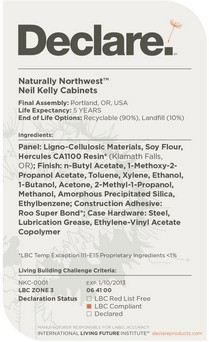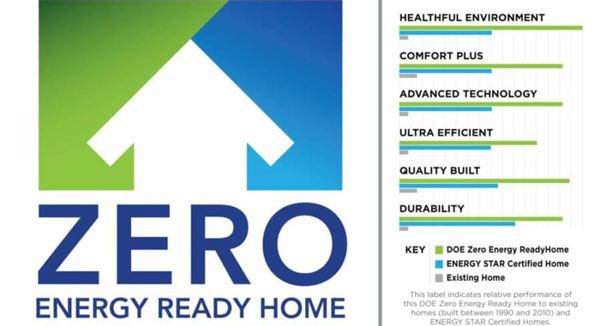We spend 90% of our time indoors, but we have no way of knowing the material ingredients in the walls, flooring, insulation, paint, and furnishings that surround us. Better building practices like air sealing the exterior of a building to keep out pests and dust, eliminating conditions in which condensation can occur, and using better air filtration can do a lot to improve indoor air quality. Green cleaning practices use simple alternatives to toxic cleaning products that can trigger asthma attacks. There are many things we can do in the design of our homes and their maintenance to reduce asthma triggers and create healthier conditions. However, if we want to design or live in a home without building materials known to contribute to asthma or cause cancer, there are some obstacles in our way.
Currently manufacturers are not required to disclose the ingredients that they use to make building materials and furnishings.
We rely on a patchwork of mismatched state regulations to determine what materials are safe. Historically there has been a 20 to 60 year lag between the time that we learned that a common building material ingredient like lead, or arsenic, is harmful to human health and regulations being formed to protect us from exposure. Consumers need more information on building materials so they can make informed decisions, instead of having to wait for regulations to protect them.
We have seen how consumer awareness can drive down the levels of certain toxic materials in our environment. Through voluntary phase outs, green building rating systems like LEED and the Living Building Challenge, and public awareness around the health hazards of FEMA trailers* used for temporary housing after Katrina, the amount of formaldehyde in building products has declined significantly since the year 2000. This doesn’t just benefit the people buying those products – the amount of formaldehyde emissions in the air we all breathe has dropped at an even greater rate. Beyond formaldehyde, there are many other chemicals of concern in common building products today that are associated with serious health risks.
 Thankfully, there is a growing movement for disclosure.
Thankfully, there is a growing movement for disclosure.
Health Product Declarations (HPDs), like Declare, are a voluntary way for manufacturers to disclose their material ingredients. These HPDs act just like the nutrition labeling we have come to expect on our food. Many building material manufacturers have resisted this call for disclosure, using the same arguments that food producers when nutritional labeling was first proposed, “we can’t disclose our ingredients, they are proprietary trade secret” or “if everyone knows what is in our materials, it will hurt our business.” However, some of the largest manufacturers of carpet, wood products, insulation, and other building materials, are leading the way by providing HPDs for the materials that they produce.
The success of companies like Shaw, Prosoco, Mohawk, Knauff and others illustrates that just like in the food industry, disclosure doesn’t hurt business, and can actually improve sales. These companies understand that it takes more than a list of ingredients for another manufacturer to be able to replicate their “secret recipe.” In several cases, the process of disclosure led a manufacturer to discover that there was a readily available substitution for a potentially harmful ingredient in their product. Knauff insulation, for example, provides an HPD for its batt insulation products. Most manufacturers use formaldehyde as a binder in their insulation. Knauff looked for alternatives, and found common dextrose, a derivative of sugar, works just as well. Prosoco eliminated toxic plasticizers from their liquid applied air barriers. Health Product Declarations not only allow builders and homeowners to make informed decisions, they also drive innovation in the building industry.
Manufactured housing has an opportunity to lead the industry in providing healthier, safer homes.
Unlike a site built home, manufactured home providers don’t have to worry about a worker using “back of the truck” materials from a job down the road. Manufactured home providers have much greater knowledge and control of the materials used in each home. What if manufactured home providers start require HPDs for the building materials they purchase, and eliminating chemicals of concern? They could provide the equivalent of a nutrition label to potential homeowners. Imagine the ripple effect once homeowners are able to make choices about the materials in their homes! Manufactured home providers are perfectly positioned to lead the way in material disclosure and the delivery of healthy, safe, and affordable homes.
*Editor’s Note: The temporary trailers used to house Hurricane Katrina victims, also known as FEMA trailers, were recreational vehicles not built to meet federal building codes for manufactured homes.

There is no EPA for Indoor Environmental Quality, consider that for a moment.
– Rebecca Bryant














